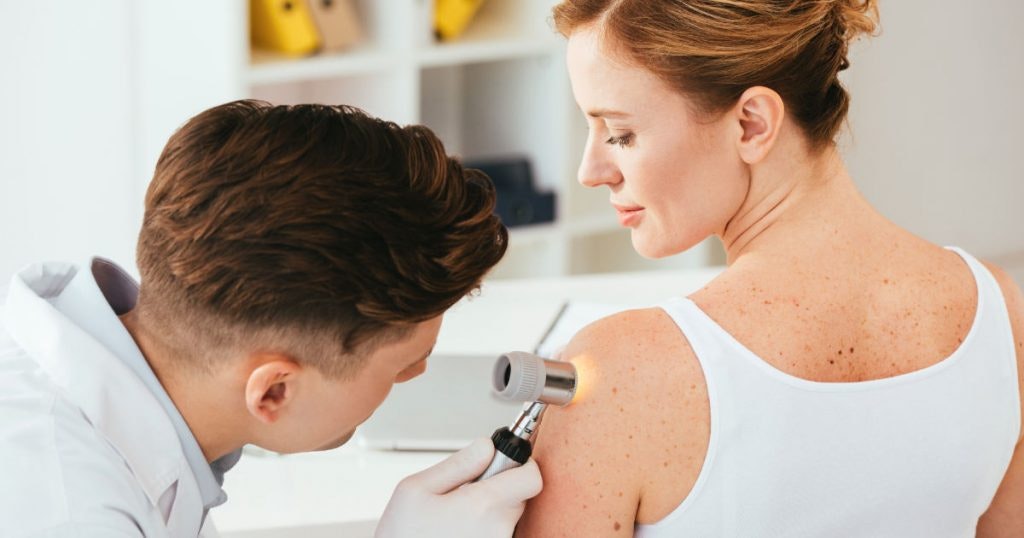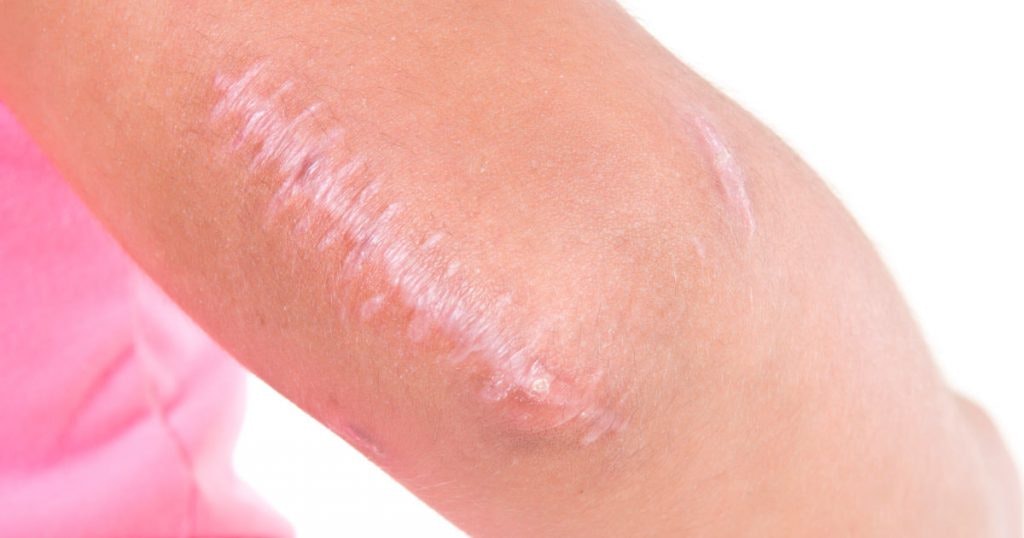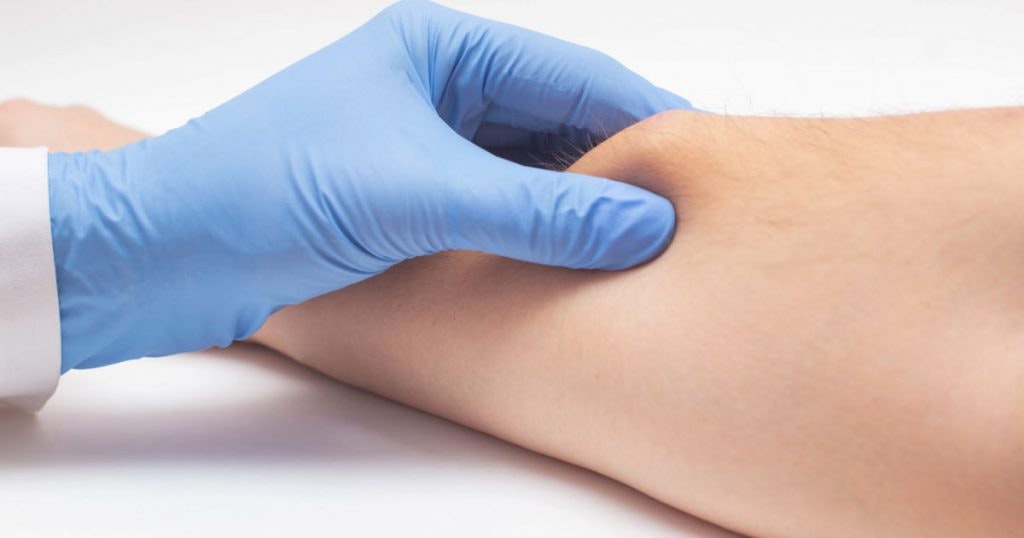
In 2020, Dermatology Procedures are incredibly easy to carry out. With minimal pain, down-time or discomfort, the range of Dermatology available to you has never been more effective or enticing.
But what types of Dermatology Treatments can you get, what are the effects and how can dermatology help you? This week, we take a deep dive into each type and answer all the questions that may arise when thinking of getting dermatology treatments.
What Types of Dermatology Procedures Are Available at EF MEDISPA?
At EF Medispa, you can get a range of
dermatology procedures for your skin concerns including cyst removal, mole removal, skin tags removal, keloid scar treatment, wart removal and lipoma removal.
Each type of dermatology treatment offers you unique skin corrections and can seamlessly help you rejuvenate your skin and provide you with a much-needed confidence boost.
How Dermatologists Remove Cysts and Does It Hurt?
A skin cyst usually develops as a result of an infection from a blocked gland and forms as a lump located beneath the skin. This is filled with fluid and is usually a similar size and shape to a small pea. Cysts can appear anywhere on your body but often form on the face and scalp. As cysts become more infected, they can start to get more uncomfortable or painful.
We recommend the removal of cysts to be reviewed by one of our doctors. Our
Cyst removal process is completed by our skilled dermatologists and will be completed under local anesthetic to numb the area for a painless procedure.
The process will take roughly 30 minutes depending on the size and depth of your Cyst, allowing you to return to work immediately with permanent results.
What Types of Mole Removal Are Available?
Moles are small coloured spots or growths that occur when your skins pigment cells grow in clusters instead of being spread out evenly. Most of us have moles, making them one of the most common types of skin concerns. Depending on the size and place of moles, they can become irritating and harm our self-confidence.

Following an assessment of your moles, our Dermatologists at EF Medispa will provide you with the best solution for
painless mole removal.
There are two types of mole removal procedures available, both of which provide you with no downtime and can usually take around 20 minutes to complete. The first type of mole removal procedure is via shaving. Shaving is fast and painless and involves shaving the mole down to make it flush with the surrounding skin. The second type is excision mole removal which is for flat moles – both of which are performed with a local anesthetic to numb the area.
How Can You Remove Skin Tags?
Skin tags are very common and harmless. They consist of small, soft, skin-coloured growths that are attached to the exterior of your skin. They usually form in areas where your skin rubs together such as the neck, armpit or under the breasts and can also occur on your face, especially around the eyelids.
The
treatment for skin tags is easy, painless and done under local anesthetic. There are two types of skin tag removal including excision removal and Cryotherapy. The excision is fast and effective and involves using a scalpel to remove the skin tag which is then closed using stitches. The second method of removal is Cryotherapy, this involves removing the skin tag by freezing the concern with Cryogen (Liquid nitrogen).
Both skin tag removal treatments allow you to return to work Immediately and usually take around 20 minutes to complete.
What Are Keloid Scars and How Can I Remove Them?
A keloid scar is a tough, raised scar that often grows larger than the original wound. During their inception, they usually begin as a red or purple colour, before becoming brown or sometimes pale.

Unlike scars, keloids do not fade over time, so keloid scar removal may be necessary. The
treatment for keloid scars is quick, painless and requires no downtime after the procedure so you can return to work straight away.
The procedure includes our trained dermatologist using a course of corticosteroid injections. Over time, this will help diminish its appearance.
Can I Get Warts Removed Permanently?
Caused by a viral infection, warts are small raised lumps on your skin’s surface which usually appear on your hands and feet but can spread to other areas as well.
Most people who have warts believe it can affect their self-confidence and feel uncomfortable on their skin.
Thankfully, there are two types of
procedures to remove warts from your skin. The first procedure to remove warts is by freezing with liquid nitrogen (cryotherapy) which will allow the wart to gradually flake and peel away. The other way is by excision and is applied with a local anesthetic.
Both procedures allow you to return to work straight away and usually take around 20 minutes to complete.
How Can Dermatologists Remove Lipomas?
Lipomas are soft lumps that are formed of fatty tissues, usually under the skin and are harmless. They are formed after an overgrowth of fat cells. Sometimes, they can cause minor discomfort or need to be removed for aesthetic reasons.

We recommend visiting one of our trained dermatologists to provide you with a plan to
remove any lipomas via the two treatment types including surgical removal or liposuction. The surgical method is completed via a minimal excision on the skin and cut away from under the skin, this is then stitched back up and is completed under local anesthetic.
The second form of treatment is completed by liposuction – a small incision is made to allow the growth to be curetted from beneath the skin and can be used to remove several lipomas at once.

 In 2020, Dermatology Procedures are incredibly easy to carry out. With minimal pain, down-time or discomfort, the range of Dermatology available to you has never been more effective or enticing.
But what types of Dermatology Treatments can you get, what are the effects and how can dermatology help you? This week, we take a deep dive into each type and answer all the questions that may arise when thinking of getting dermatology treatments.
In 2020, Dermatology Procedures are incredibly easy to carry out. With minimal pain, down-time or discomfort, the range of Dermatology available to you has never been more effective or enticing.
But what types of Dermatology Treatments can you get, what are the effects and how can dermatology help you? This week, we take a deep dive into each type and answer all the questions that may arise when thinking of getting dermatology treatments.
 Following an assessment of your moles, our Dermatologists at EF Medispa will provide you with the best solution for painless mole removal.
There are two types of mole removal procedures available, both of which provide you with no downtime and can usually take around 20 minutes to complete. The first type of mole removal procedure is via shaving. Shaving is fast and painless and involves shaving the mole down to make it flush with the surrounding skin. The second type is excision mole removal which is for flat moles – both of which are performed with a local anesthetic to numb the area.
Following an assessment of your moles, our Dermatologists at EF Medispa will provide you with the best solution for painless mole removal.
There are two types of mole removal procedures available, both of which provide you with no downtime and can usually take around 20 minutes to complete. The first type of mole removal procedure is via shaving. Shaving is fast and painless and involves shaving the mole down to make it flush with the surrounding skin. The second type is excision mole removal which is for flat moles – both of which are performed with a local anesthetic to numb the area.
 Unlike scars, keloids do not fade over time, so keloid scar removal may be necessary. The treatment for keloid scars is quick, painless and requires no downtime after the procedure so you can return to work straight away.
The procedure includes our trained dermatologist using a course of corticosteroid injections. Over time, this will help diminish its appearance.
Unlike scars, keloids do not fade over time, so keloid scar removal may be necessary. The treatment for keloid scars is quick, painless and requires no downtime after the procedure so you can return to work straight away.
The procedure includes our trained dermatologist using a course of corticosteroid injections. Over time, this will help diminish its appearance.
 We recommend visiting one of our trained dermatologists to provide you with a plan to remove any lipomas via the two treatment types including surgical removal or liposuction. The surgical method is completed via a minimal excision on the skin and cut away from under the skin, this is then stitched back up and is completed under local anesthetic.
The second form of treatment is completed by liposuction – a small incision is made to allow the growth to be curetted from beneath the skin and can be used to remove several lipomas at once.
We recommend visiting one of our trained dermatologists to provide you with a plan to remove any lipomas via the two treatment types including surgical removal or liposuction. The surgical method is completed via a minimal excision on the skin and cut away from under the skin, this is then stitched back up and is completed under local anesthetic.
The second form of treatment is completed by liposuction – a small incision is made to allow the growth to be curetted from beneath the skin and can be used to remove several lipomas at once.


